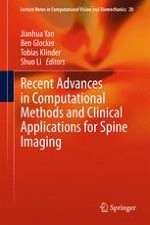This book contains the full papers presented at the MICCAI 2014 workshop on Computational Methods and Clinical Applications for Spine Imaging. The workshop brought together scientists and clinicians in the field of computational spine imaging. The chapters included in this book present and discuss the new advances and challenges in these fields, using several methods and techniques in order to address more efficiently different and timely applications involving signal and image acquisition, image processing and analysis, image segmentation, image registration and fusion, computer simulation, image based modeling, simulation and surgical planning, image guided robot assisted surgical and image based diagnosis. The book also includes papers and reports from the first challenge on vertebra segmentation held at the workshop.
